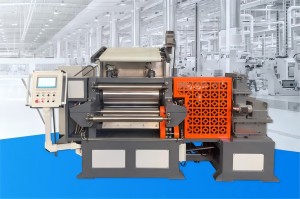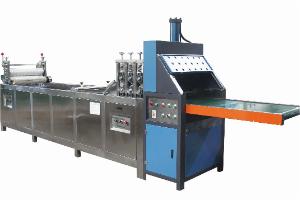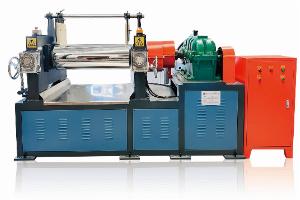
What Are Twin-Conical and Triple-Conical Screw Extrusion Calendering Machines?
2025-10-10
Introduction: A Core Technology in Rubber and Plastic Processing
In the world of rubber and plastic manufacturing, Twin-Conical and Triple-Conical Screw Extrusion Calendering Machines play a key role that many people don’t even notice. These machines are designed to mix, melt, and shape rubber or plastic materials with high precision. Whether it’s producing rubber sheets, PVC films, or other industrial materials, extrusion and calendering are the backbone of consistent, high-quality production.
If that sounds a bit technical—don’t worry! Let’s break it down step by step.
Understanding the Basics: What Is Extrusion Calendering?
Extrusion calendering combines two critical processes: extrusion and calendering.
-
Extrusion is the process of forcing heated material through a screw barrel, shaping it as it flows.
-
Calendering then presses this extruded material between heavy rollers to form smooth, even sheets.
So, when we talk about Twin-Conical or Triple-Conical Screw Extrusion Calendering Machines, we’re referring to advanced equipment that handles both tasks continuously—melting, mixing, and flattening in one seamless operation.
Twin-Conical vs. Triple-Conical: What’s the Difference?
Here’s where it gets interesting. Both systems share the same core principle but differ in performance and application:
-
Twin-Conical Screw Extruders use two conical screws. They are ideal for stable output, strong mixing, and precise temperature control. This makes them perfect for PVC, rubber, and other thermoplastic materials.
-
Triple-Conical Screw Extruders, on the other hand, use three screws for higher output and enhanced homogenization. They are typically used when the product requires superior dispersion or higher throughput.
In short, if you want power and precision, go twin-conical; if you need high volume and top mixing quality, go triple-conical.
Key Features and Advantages
So, what makes these machines so valuable to manufacturers? Let’s take a closer look:
-
Excellent Material Plasticizing – The conical screw design ensures better mixing and melting, preventing uneven distribution.
-
Stable Output and Pressure – Ideal for producing continuous sheets with consistent thickness.
-
Energy Efficiency – The conical design allows efficient heat transfer and lower energy consumption.
-
Strong Adaptability – Works with various rubber and plastic compounds.
-
Integrated Calendering – The built-in calendering system reduces processing time and improves product uniformity.
Honestly, once you see how steady the output is, it’s hard to imagine running production without one.
Common Applications
The Twin-Conical and Triple-Conical Screw Extrusion Calendering Machines are widely used in industries that rely on flexible and durable materials. Here are a few examples:
-
Rubber Sheets – Used for automotive seals, gaskets, and flooring materials.
-
PVC Films and Boards – Applied in packaging, construction, and furniture industries.
-
Industrial Belts – For conveyors, power transmission, and other machinery.
-
Waterproof Membranes – Commonly used in construction and roofing systems.
Basically, if it’s a rubber or plastic sheet product, this machine probably helped make it.
Why Choose the Right Supplier Matters
When investing in such advanced equipment, choosing a reliable manufacturer is as important as the machine itself. A trusted China manufacturer and supplier can provide not only stable-quality machines but also after-sales support, customization, and technical training.
For example, experienced companies like Quanzhou Sanxing Machinery Industry And Trade Co., Ltd. have years of expertise in rubber and plastic machinery, offering integrated solutions that improve production efficiency and reduce downtime.
Conclusion: Precision Meets Productivity
The Twin-Conical and Triple-Conical Screw Extrusion Calendering Machines are more than just industrial tools—they are the foundation of modern rubber and plastic production. Their ability to mix, extrude, and calender with precision ensures that every sheet, film, or strip meets the highest standards of quality.
Whether you’re upgrading your production line or setting up a new plant, understanding these machines is the first step toward smarter, more efficient manufacturing.


